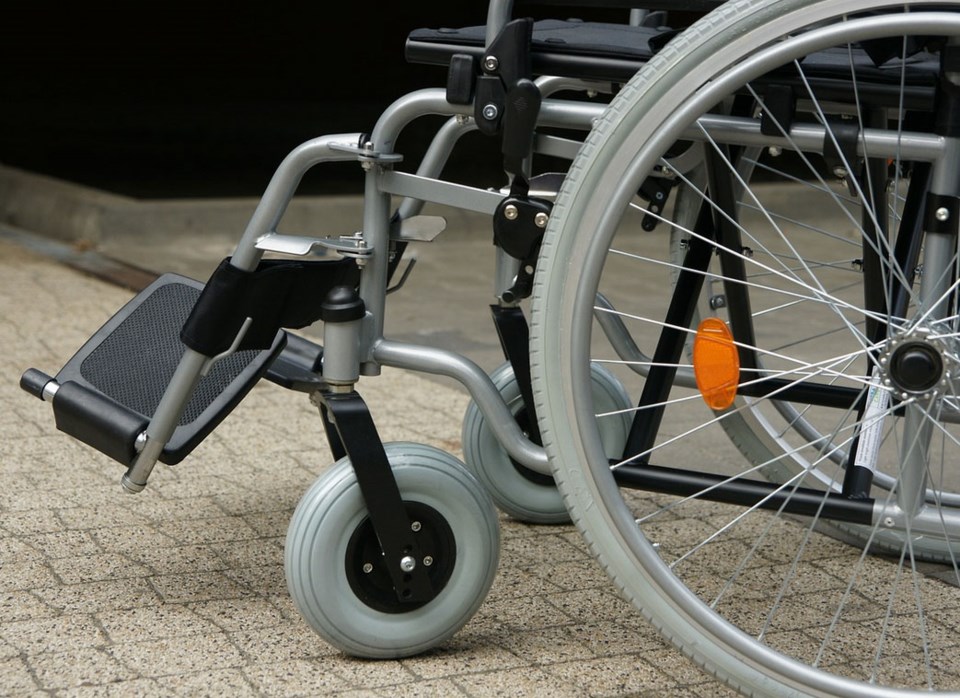It could become a little easier to find an accessible housing unit in Delta.
One of the key priorities in Delta’s new Housing Action Plan, recently approved by council, is to encourage, through incentives and potential regulation, an increase in the supply of adaptable or accessible units that meet the needs of persons with differing abilities.
The Housing Action Plan outlines several strategies and actions, which must still come back for individual bylaw approvals, the city can take, noting municipalities in B.C. are able to encourage this type of housing through a combination of regulations and incentives.
“One of the challenges that many communities in BC are facing when it comes to adaptable units is that there is no system in place for tracking them in the private market. What this means is that renters, home buyers, property managers, and realtors are often unaware that a unit is adaptable, making it difficult to connect a unit with a household that would benefit from adaptability,” according to a report on the action plan.
The report notes accessible units are more often built with a specific user in mind and that many are managed by a non-profit housing provider that serves people with differing abilities.
Increasing the supply of these units in the broader housing system creates overall flexibility so that households that require accessibility have more housing choices, the report adds.
The report goes on to note that requiring adaptable units is becoming increasingly common, with minimum threshold requirements in new multi-unit housing.
“This is often offset with a slight density bonus to offset the floor area requirements of adaptable housing. Some communities are also incentivizing fully accessible units through density bonusing where additional density is provided in exchange for a proportion of that additional density being dedicated to fully accessible units,” the report notes.
One of the actions in the Delta strategy is for the city to survey policies throughout Metro Vancouver to determine current best practices for adaptable and accessible units and consider an increase in the requirement of adaptable units based on those findings.
One of the other actions calls on the city, at regular intervals, to check in with Delta’s Mobility and Accessibility Committee and other relevant stakeholders to find out how people with differing abilities are able to access adaptable and accessible units.
Stephanie Cadieux, BC Liberal Critic for Gender Equity, Inclusion and Accessibility, this week introduced legislation that would require accessibility be considered in new housing projects in the province.
It’s the fourth time she proposed such legislation.
“While the ongoing housing crisis is often discussed in our province, we rarely speak of the housing that is sorely lacking for British Columbians living with disabilities – accessible and adaptable housing must be addressed,” said Cadieux in a news release.
“Right now, we are simply not building housing that works for everyone. We need more homes that are truly accessible or adaptable – where this is considered in every step of the process from the very foundation.”
Delta Coun. Dylan Kruger said the city has been moving forward with initiatives to address the ongoing housing crisis through the adoption of the Housing Action Plan as well as approval of some key redevelopments.
However, Delta has a ways to go to implement Delta’s Housing Action Plan and build a more equitable community where everyone is welcome, regardless of age, socioeconomic status or ability.
“The addition of Delta’s new Mobility and Accessibility Committee has added a new level of accountability for new housing projects across our community. Instead of just meeting provincial standards, we expect builders to go above and beyond to ensure new housing units are accessible for everyone, regardless of age or ability. Increasingly, there is a trend towards creating adaptable dwellings where residents can age in place,” said Kruger.
“In multi-storey houses and townhouses, this can now be done be roughing in space for a lift so that stairs are no longer a barrier for aging or mobility-constrained residents.”



